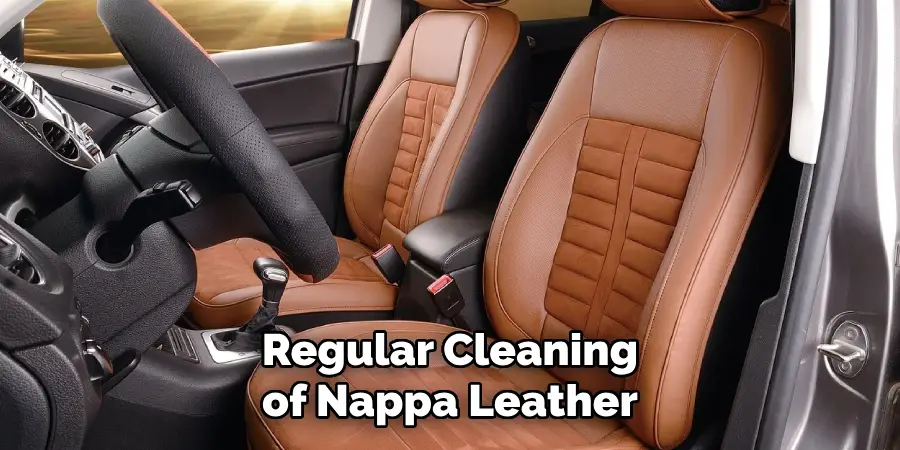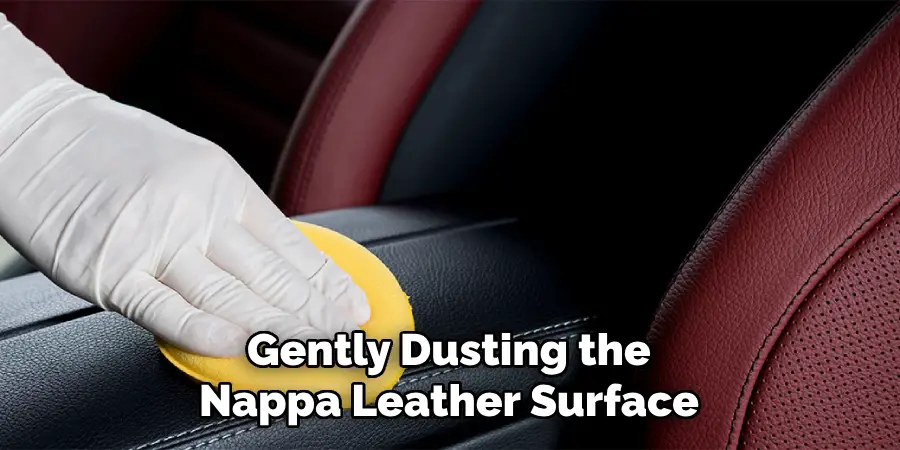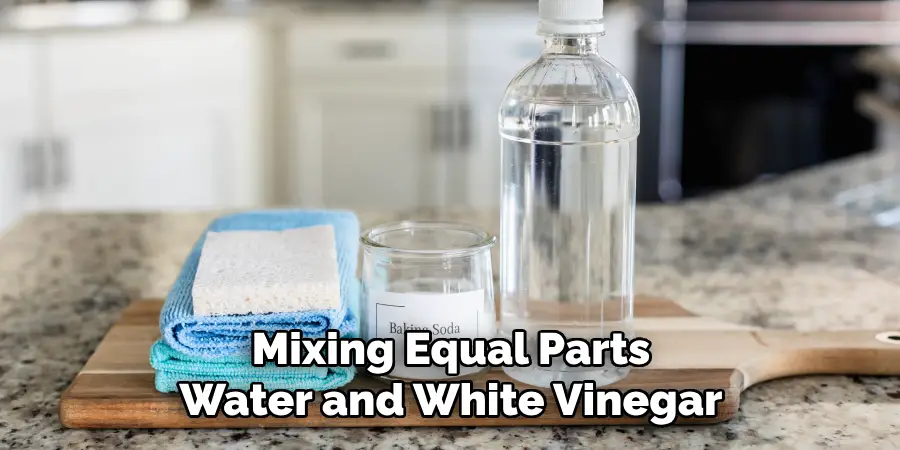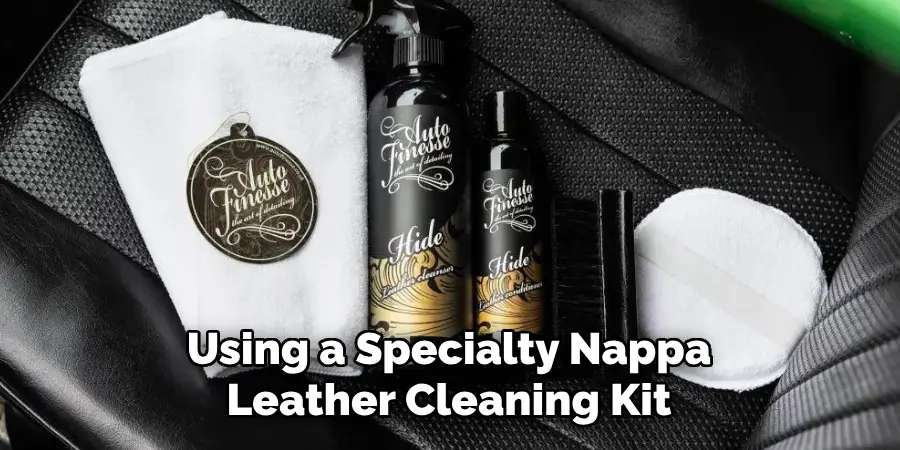Nappa leather, known for its luxurious feel and fine grain, epitomizes sophistication in automotive interiors, fashion accessories, and furniture. While its exquisite texture enhances the aesthetic appeal, maintaining Nappa leather’s pristine condition requires specialized care. Cleaning Nappa leather necessitates a delicate touch to preserve its softness and sheen, and the right techniques ensure longevity and timeless elegance.

In this comprehensive guide, we embark on the journey of understanding how to clean Nappa leather effectively, exploring tailored methods and essential tips for keeping this high-quality leather looking its best.
Whether it’s a designer handbag, luxury car interior, or a cherished piece of furniture, mastering the art of Nappa leather cleaning allows you to enjoy the sumptuous allure of this material while safeguarding its enduring beauty against the rigors of daily use.
Importance of Proper Nappa Leather Care
Proper care of Nappa leather is paramount to preserving its unique characteristics and ensuring it ages gracefully. Being a high-quality material, it is susceptible to scratches, fading, and staining, which can diminish its luxurious appearance over time.
By adhering to a regular maintenance routine, the inherent risks associated with exposure to oils, UV rays, and abrasive substances can be mitigated. This not only extends the life of the leather but also maintains its supple feel and elegant finish. Essentially, the importance of proper Nappa leather care cannot be overstated; it is an investment in the longevity and refinement of your cherished leather goods.
Benefits of Regular Cleaning
Regular cleaning of Nappa leather is beneficial not only for maintaining its luxurious look but also for prolonging its durability. Frequent cleaning prevents the accumulation of dirt and oils that can cause the leather to become dull and lose its soft texture.

Additionally, by removing abrasive particles, you reduce the risk of scratches that can irreparably damage the surface. Furthermore, consistent care helps to prevent stubborn stains from setting in, which can be challenging and costly to remove. Ultimately, engaging in a routine cleaning regimen serves as a proactive measure against wear and tear, ensuring that Nappa leather items retain their value and continue to exude elegance for years to come.
Understanding Nappa Leather
To properly care for Nappa leather, it is essential to understand its unique attributes and composition. Nappa leather is crafted from the top layer of animal hides, typically from sheep, lambs, or calves, and is renowned for its full-grain quality.
This means that the leather features a natural surface with minimal processing, preserving its genuine texture and pliability. The hallmark of Nappa leather is its velvety-soft feel, achieved through a specialized tanning process that maintains the hide’s organic characteristics while also imbuing it with an extra layer of delicacy.
Its unaltered surface is especially receptive to dyes, allowing for rich, deep coloration that adds to its luxurious appeal. However, this very softness and natural state also make Nappa more vulnerable to damage without the proper care. Therefore, a holistic understanding of Nappa leather is the foundation upon which effective maintenance practices are built, ensuring that the leather’s beauty and texture are maintained throughout regular use.
Types of Nappa Leather Products
Nappa leather’s exceptional quality makes it highly sought-after for a variety of luxury products. Among its most common applications is in the automotive industry, where it graces the interiors of high-end vehicles, providing a sumptuous tactile experience for seats, steering wheel covers, and gearshift knobs.
In the fashion realm, Nappa is often the material of choice for designer handbags, wallets, and gloves, prized for its buttery texture and elegant finish. Footwear also benefits from Nappa leather’s pliability and comfort, found in premium shoes and boots.

Additionally, this versatile material enhances home decor as it is used in upscale furniture like sofas, armchairs, and ottomans—turning everyday living spaces into bastions of luxury. Each of these products requires distinct care considerations, but the unifying factor is the need for gentle cleaning methods and conditioners that are appropriate for Nappa leather’s delicate nature.
Factors Affecting Cleaning Methods
The approach to cleaning Nappa leather must be tailored to various factors that influence the selection of methods and products. The color and finish of the leather play a critical role; for instance, lighter shades require more frequent attention and gentle, non-color-altering solutions to prevent discoloration.
The type of product and its use also determine the cleaning regimen; a car interior might demand different care compared to a leather handbag exposed to different environmental elements. Moreover, the age and condition of the leather affect the choice of treatment; older leather may need more nurturing measures to avoid further wear.
Understanding the specific needs based on these factors ensures that cleaning and maintenance are conducted without compromising the integrity and appearance of the Nappa leather item.
10 Methods How to Clean Nappa Leather
1. Regular Dusting and Vacuuming:
Begin by gently dusting the Nappa leather surface with a soft, dry cloth to remove any loose particles. For seams and crevices, use a vacuum cleaner with a soft brush attachment to prevent scratches and maintain the leather’s smooth texture. This will help to keep your Nappa leather furniture looking clean and free of dust. While vacuuming, take care to not press too hard on the leather surface as this can cause damage.

Regular dusting and vacuuming is essential to prevent dirt and debris from settling into the pores of the Nappa leather. If left unchecked, these particles can gradually wear away at the surface, resulting in a dull and damaged appearance. In addition, regular cleaning helps to maintain the leather’s natural oils, keeping it supple and preventing cracking or peeling.
2. Mild Soap and Water Solution:
For light cleaning, create a solution of mild soap and warm water. Dampen a soft cloth with the solution and gently wipe the Nappa leather surface. Ensure that the cloth is not overly wet, and immediately follow up with a dry, clean cloth to prevent water damage. This method helps remove surface dirt and grime.
Additionally, using a mild soap and water solution is also beneficial for maintaining the softness and suppleness of Nappa leather. Harsh chemicals or strong detergents can strip away natural oils from the leather, causing it to dry out and become brittle over time.
It’s important to note that not all soaps are suitable for cleaning leather. Always opt for a mild, pH-balanced soap specifically designed for cleaning leather surfaces. Avoid using products that contain bleach, ammonia, or other harsh chemicals as they can cause discoloration and damage to the leather.
3. Leather Cleaning Wipes:
Specialized leather cleaning wipes designed for Nappa leather can provide a quick and convenient cleaning solution. These wipes are pre-moistened with a gentle leather cleaner, making them suitable for regular maintenance and spot cleaning. Follow the product instructions for best results.

Leather cleaning wipes are a great option for those who want to clean their Nappa leather items without using water or harsh chemicals. They are also perfect for on-the-go cleaning, as they can easily fit in your bag or car.
To use leather cleaning wipes, simply wipe down the surface of your Nappa leather item with the pre-moistened wipe. Make sure to cover the entire surface, including any crevices or seams. Gently wipe away any dirt or stains, and allow the leather to air dry completely.
It is important to note that leather cleaning wipes should only be used for regular maintenance and spot cleaning. For deep cleaning, it is still best to consult a professional cleaner who specializes in Nappa leather. Excessive use of wipes or using them on heavily soiled areas can cause damage to the leather.
4. Commercial Leather Cleaner:
Invest in a high-quality commercial leather cleaner specifically formulated for Nappa leather. Apply the cleaner with a soft, lint-free cloth, following the product instructions. These cleaners are designed to effectively lift dirt, stains, and oils while preserving the leather’s natural oils and suppleness. Some cleaners may require you to let the product sit on the leather for a few minutes before wiping it off, so be sure to read and follow the instructions carefully.
If you don’t have access to a commercial cleaner, you can make your own by mixing equal parts water and white vinegar. This natural solution is gentle enough for use on Nappa leather but still effective in removing dirt and stains. Simply dampen a soft cloth with the solution and gently wipe down the leather, being careful not to saturate it.

After cleaning, allow the leather to air dry completely before applying any conditioners or protectants.
5. Vinegar and Water Mixture:
Create a DIY cleaning solution by mixing equal parts white vinegar and water. Dampen a soft cloth with this solution and gently wipe the Nappa leather. Vinegar helps break down oils and residues, making it effective for removing stains. Follow up with a dry cloth to ensure the leather doesn’t stay damp. This solution is also great for removing mildew or mold on Nappa leather.
Another alternative cleaning solution for Nappa leather is to mix equal parts rubbing alcohol and water. Rubbing alcohol has disinfectant properties, making it effective in killing bacteria and germs on the surface of the leather. It is also a gentle cleaner that won’t damage the delicate material.
For tougher stains or buildup on Nappa leather, a mixture of lemon juice and cream of tartar can be used. Make a paste with equal parts lemon juice and cream of tartar and apply it to the affected area. Let it sit for 10-15 minutes before wiping it off with a damp cloth. Repeat if necessary until the stain is gone.
6. Eraser for Stains and Scuffs:
Address light stains and scuffs on Nappa leather by using a white eraser. Gently rub the eraser over the affected area, applying light pressure. This method helps lift surface marks without causing damage to the leather. Follow up with a clean, dry cloth to remove any eraser residue.
For tougher stains, a leather cleaner specifically formulated for Nappa leather can be used. Be sure to test the cleaner on a small, inconspicuous area first before applying it to the stain. Gently rub the cleaner onto the stain using a soft cloth and then wipe away with a clean, damp cloth.

Also, avoid using harsh chemicals or abrasive cleaners on Nappa leather as they can cause discoloration or damage to the surface. Instead, opt for gentle, leather-safe products and always follow the instructions provided.
7. Leather Conditioner Application:
Regularly applying a high-quality leather conditioner is crucial for maintaining Nappa leather’s softness and sheen. Choose a conditioner specifically designed for Nappa leather and follow the product instructions. Conditioning helps prevent drying, cracking, and maintains the leather’s natural luster. You can apply the conditioner with a soft cloth or sponge and gently rub it onto the leather surface. Make sure to cover the entire surface evenly, including any creases and folds in the leather.
Leather conditioner also helps protect Nappa leather from stains and spills, as it creates a protective layer over the leather’s surface. This is especially important for light-colored Nappa leather, which is more prone to showing marks and stains. When applying conditioner, make sure to use a colorless product to avoid any potential discoloration.
After application, let the conditioner sit for a few minutes before gently wiping off any excess with a clean cloth. This allows the leather to absorb the conditioner and nourish it from within. Avoid using too much conditioner as it can leave a greasy residue on the surface.
8. Steam Cleaning with Caution:
Steam cleaning can be considered for a deeper clean, but it should be approached with caution. Use a handheld steam cleaner with a leather attachment, maintaining a safe distance to prevent excessive heat and moisture. After steaming, gently wipe the leather with a dry cloth. Do not steam clean suede or nubuck as it can damage the material.
Aside from being careful with the temperature and moisture, other precautions should also be taken when steam cleaning leather. First, make sure to test the steam cleaner on a small, inconspicuous area of the leather first to ensure that there are no adverse effects.
Additionally, avoid using any harsh or abrasive cleaners or chemicals on the leather as they can cause damage. It is also important to avoid letting the steam cleaner sit in one spot for too long, as this can lead to discoloration or drying out of the leather.
9. Specialty Nappa Leather Cleaning Kits:
Some manufacturers offer specialized Nappa leather cleaning kits that include a combination of cleaners, conditioners, and protectants. These kits are tailored to the specific needs of Nappa leather and often provide comprehensive care solutions for maintaining its luxurious appeal.
These kits typically include a cleaner specifically formulated for Nappa leather, which is gentler and less abrasive than regular leather cleaners. This ensures that the delicate fibers of Nappa leather are not damaged during the cleaning process. The kit may also contain a conditioner to help restore moisture and suppleness to the leather, as well as a protectant to guard against future stains and spills.
When using a specialty Nappa leather cleaning kit, it is important to carefully follow the instructions provided by the manufacturer. This will ensure that the products are used correctly and effectively, without causing any harm to the leather. Additionally, it is recommended to test the products on a small, inconspicuous area of the leather before applying them to larger surfaces.

10. Professional Leather Cleaning Services:
For extensive cleaning or stubborn stains, consider seeking professional leather cleaning services. Experienced technicians have the expertise and tools to assess and address more challenging issues without compromising the integrity of the Nappa leather. Professional cleaning can be particularly beneficial for high-end items like luxury car interiors and designer accessories.
Additionally, most reputable leather cleaning services offer repairs and restoration. This can include patching up small tears or scratches, re-dyeing the leather to restore its original color, and conditioning treatments to revitalize dry or dull-looking leather.
One of the main advantages of professional leather cleaning is that it can extend the lifespan of your Nappa leather items. Over time, dirt, oils, and other contaminants can build up on the surface of the leather, causing it to stiffen and fade. Regular cleaning and conditioning can prevent this buildup and keep your leather looking new for years to come.
Conclusion
In conclusion, mastering the art of cleaning Nappa leather ensures the longevity, beauty, and functionality of luxurious leather products. By following the outlined techniques and best practices, individuals can effectively remove dirt, oils, and stains from Nappa leather surfaces while preserving their softness and luster.
Proper preparation, including assessing the condition of the leather and selecting appropriate cleaning supplies, sets the stage for successful cleaning outcomes. Whether employing dry cleaning methods with soft brushes or utilizing moist cleaning solutions, it’s crucial to approach the process with care and attention to detail.
Hopefully, this article gave you some helpful tips about how to clean nappa leather successfully, so now that you have the proper knowledge on how to get the job done, why not give it a try today?

